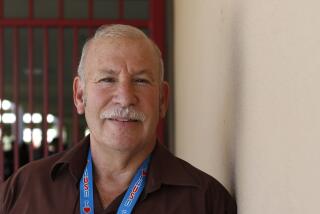An Ambassador-Class School?
The Ambassador Hotel has been through monumental changes in its 69 years. Now the defunct hotel is the focus of a bidding war involving preservationists, Donald Trump and the Los Angeles Unified School District. But in going all out to âwinâ the Ambassador property, the school district has mistakenly taken a righteous line and lost sight of achieving the basic educational goal.
School officials want the Ambassadorâs 24-acre site on Wilshire Boulevard for a high school. But while thereâs no doubt about the need for another mid-city high school, the Ambassador site is the wrong place for it.
A company managed by Trump owns the Ambassador property and recently announced tentative plans to develop a 125-story office tower. Whether such a skyscraper ever will, or should, be built is still open to question. But thereâs little question that the mid-Wilshire district would be stabilized by a development consistent with its commercial surroundings.
The staff of the agency that controls the school construction purse strings, the State Allocation Board, has recommended that the board turn down the districtâs request for $120 million to buy the prime real estate. Even if voters in June approve $500 million in school-construction funds, the board would find it hard to set aside 20% of the entire amount for one Los Angeles school.
So why not pursue some of the districtâs creative proposals that are more in keeping with budgetary reality? Like turning inner-city parks into school sites, and allowing the grounds to be used as parks on weekends and after school. The Department of Recreation and Parks should stop fighting this. And it is important to find sites that donât require large-scale demolition of existing housing--something else in desperately short supply in the mid-city area. Los Angeles High School sits on a compact 11 acres, including an athletic field.
Of course, it isnât fair that many suburban schools built 20 to 30 years ago are roomier. Just as it isnât fair that Proposition 13 forced many school districts to stop building schools and thus precipitated the current crisis. But the sad reality is that the district must stretch every school construction dollar as far as it will go. Paying $120 million for one school along a pricey commercial strip wonât take those dollars far enough.
More to Read
Sign up for Essential California
The most important California stories and recommendations in your inbox every morning.
You may occasionally receive promotional content from the Los Angeles Times.










